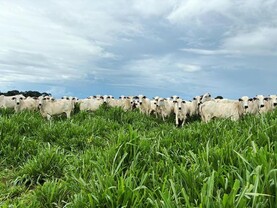I am a fourth-generation farmer on a family-owned and operated broad acre cropping and livestock business at Kalannie, 260km northeast of Perth in Western Australia (WA).
Kalannie is situated in the low rainfall area of the central Western Australian wheatbelt with an annual rainfall of 300mm.
Western Australia produces about 13m tonnes of grain each year, making it the largest grain-producing state in Australia. Grain exports generate more than $4bn for the WA economy each year, making it the largest agricultural sector in the state.
In 2016, our family business R Nixon and Co Kalannie planted 13,350ha of wheat, barley and canola with two sets of sowing machinery.
We have 1,200 Merino ewes, which represent about 25% of our stocking rate 10 years ago.
The property will be fully destocked in 2017 after running livestock for 92 years. This trend out of livestock is being replicated across the state, as the number of Merino sheep continues to decline. The WA sheep flock peaked at about 38m in 1990, but has since fallen to 14m head.
We bought another farm this year and have about 18,500ha arable now and plan to crop between 15,000ha and 16,000ha this year, depending on how the season breaks. We’ve gone to three seeders this year.
As we transition out of livestock, we are converting pasture to chemical fallow in order to store moisture and accumulate mineralised nitrogen for following crops.
On our farm, pasture or fallow is often followed by a canola second break to reduce disease and weed pressure and improve canola performance.
The double break enables two years of very effective weed and disease control, which then leads into a low-cost cereal phase.
We have found canola to be the superior break crop for our farm. We stopped growing legumes as a break crop in 2010 due to their poor performance, low economic return and poor weed control outcomes compared with canola.
If the seasons continue to become drier and more variable, it is likely we will continue to take poor-performing soil types (heavy clays and poor sands) out of cropping. Such areas could be planted with trees or fodder shrubs to allow confined feeding if livestock continues to be a part of the business.
The decline in autumn/sowing rainfall has focused our recent land purchases on more flexible light-to-medium textured soil types. These require less moisture to establish crops and produce grain. Our last purchase occurred before the 2002 drought, which was so severe that we were not even able to harvest seed for the following season.
However, we have gradually grown our business over time to achieve economies of scale. Kalannie land values are around $250 (€166) to $300 (€199) per acre, which is low by Australian and international standards and makes the area a financially attractive place to farm with great opportunities when risk is managed appropriately.
The first crop planted on R Nixon and Co Kalannie was in 1927. Since 1999, we have experienced our driest and wettest seasons and our poorest and most profitable seasons. Our 10-year wheat average has dropped 250kg/ha since the end of the 1990s to today (1.58t/ha).






 This is a subscriber-only article
This is a subscriber-only article










SHARING OPTIONS: